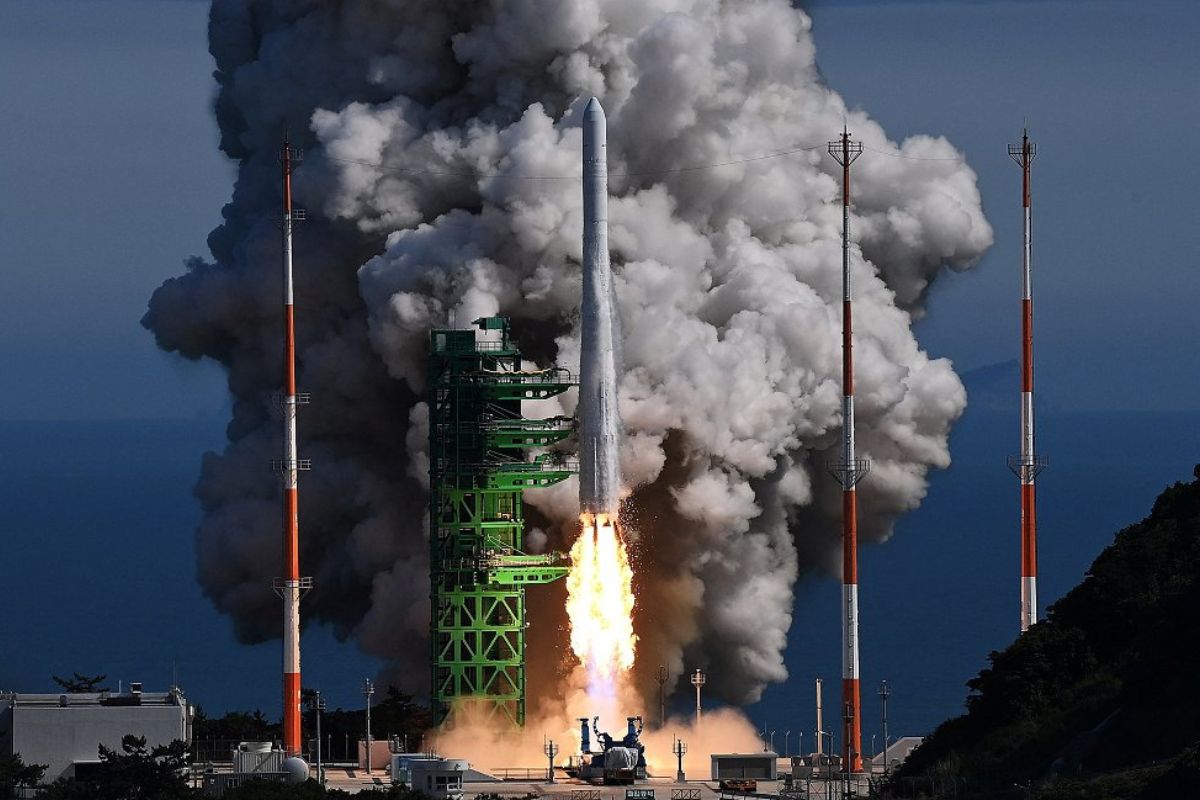South Korea made a major step forward in the intensifying space race by successfully launching its homegrown space rocket, Nuri, and setting the stage for more ambitious space projects going forward. The 200-ton Nuri space rocket lifted off from the Naro Space Center in Goheung, South Jeolla Province, at 4 p.m. on Tuesday, and an hour later the science minister described the launch as a “monumental moment” not just in the nation’s push to advance its science and technology prowess, but in its entire history.
At 3:01 a.m. Wednesday, a South Korean satellite deployed by the Nuri rocket, more officially known as the Korea Space Launch Vehicle II, confirmed two-way communication with its ground station run by the Korea Aerospace Research Institute. The successful launch of the Nuri rocket and the deployment of its performance verification satellite means that South Korea has become the seventh in the world to launch a satellite weighing 1 ton or more into space orbit with domestically developed technologies.
Advertisement
Currently, the United States, Russia, Europe, Japan, China and India have that capability. The breakthrough came after identifying and fixing the problems that led to a botched attempt last October. The Nuri rocket was built to its current form after Korean scientists and engineers from some 300 companies here contributed efforts for over 12 years dating to March 2010, with the government pouring around 2 trillion won ($1.54 billion) into the project. The reason the project required such arduous efforts and a large sum of money is that no country is willing to transfer the core technology need to launch a rocket into space.
Local companies and engineers deserve credit for their persistent efforts to secure and refine a wide range of necessary technologies to build the cutting-edge machine made up of around 370,000 parts. Not long ago, South Korea had to rely on rockets made by Japan and France to put a satellite into orbit, a situation that severely limited the scope of its space technology development. Now that the country has finally made a major advance, things are expected to improve in the coming years and provide a much-needed technological foundation for developing a next-generation launch vehicle.
The Nuri project is also expected to offer a fresh shot of confidence to South Korean policymakers in charge of space projects, after helplessly witnessing the successes of China and Japan in their fast-evolving space programs. The space race is no longer a quixotic field only enjoyed by sci-fi aficionados. A growing number of countries from Asia to Africa are accelerating their space projects, with some high-profile private firms, such as SpaceX, led by American billionaire Elon Musk, showcasing their commercial potential. China is aggressively pushing for its space program involving the moon and Mars, while Japan, Britain and Australia are rapidly expanding spacerelated budgets to become leading spacefaring countries.
Against this backdrop, South Korea is encouraged to use the latest Nuri breakthrough as a launching pad to fly higher. To that end, both public and private sectors should join forces. The government should streamline the law and regulations so that space startups armed with creative ideas can develop innovative solutions, components and services linked to the country’s space program. A proper investment by the government can help build local experts and nurture new technologies in a way that they can spill over into other sectors. Expectations are also high that South Korea’s capability to build a space launch vehicle carrying a homegrown satellite would boost its chance to land a lunar module by 2031.
